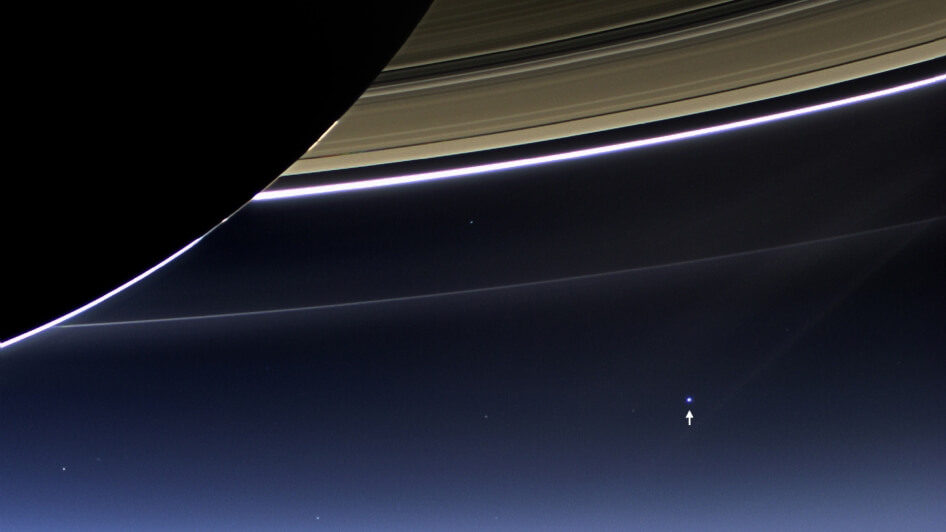NASA reveals a rare photograph of the blue planet from a distance of 1.5 billion kilometers

A raw photograph showing the Earth and the Saturn system was taken and broadcast live on July 19 by NASA's Cassini spacecraft orbiting Saturn on the occasion of the "Cheer to Saturn" campaign that took place at many sites on Earth that day. The images made a cold path to the one and a half billion kilometers (more precisely 1.44 billion km) of the interplanetary space that separates Earth from Saturn.
Members of the scientific team are currently working on image processing with the goal of creating composites of images of each individual color of the "faint blue ball."
The image consists of five separate photographs on a wide film camera and it allows a complete panoramic view. To photograph all of Saturn and its wide rings, the spacecraft took many pictures – a total of 323 images,” says Carolyn Furco, director of Cassini's photography team at the Space Science Institute in Boulder, Colorado.
In the images, the earth and the moon are seen as dots a pixel wide, but it can be understood that this is a faint blue dot, which is the home of all humanity, and our white cosmic neighbor.
Remote photographs of the Earth using robotic spacecraft, especially spacecraft that have reached the edge of the solar system, are few and far between. Therefore, this is an event that should be celebrated. "One of Cassini's most exciting events in 2013 was July 19, when the spacecraft reached a position where it was able to simultaneously photograph the entire Saturn system with the Sun behind it," explains Linda Spilker, Cassini Project Scientist on behalf of JPL. In this situation, Saturn and its rings hide the sunlight and allow collecting Unique scientific information about the rings as well as capture the Earth, which otherwise, from Saturn's perspective, is engulfed in sunlight.
Cassini already transmitted composite images of the entire Saturn system and Earth in 2006 and is still considered one of the most important images of the space age. However, the photo had scientific value because it revealed Saturn's E ring fed by the water and dust plume of the moon Enceladus, it also revealed a large variation in brightness and colors in the ring's orbit," Spilker said.

2 תגובות
It's amazing where humanity has come
To an observer on Saturn, assuming he manages to survive more than one second, the Earth will look like a morning star or an evening star. Similar to these planets viewed from Earth, we can think of other photographs using the Cassini. Earth at its zenith. To see the Earth pass the Sun similar to Venus.